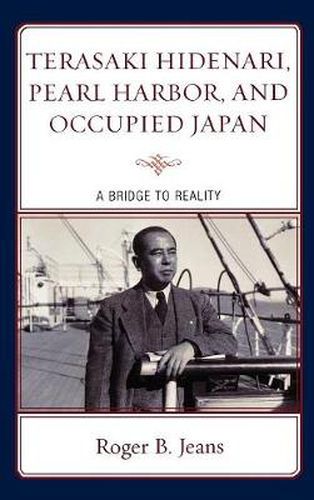Readings Newsletter
Become a Readings Member to make your shopping experience even easier.
Sign in or sign up for free!
You’re not far away from qualifying for FREE standard shipping within Australia
You’ve qualified for FREE standard shipping within Australia
The cart is loading…






Gwen Terasaki’s Bridge to the Sun, an idealized memoir of her marriage in the 1930s and 1940s to a Japanese diplomat, Terasaki Hidenari, is still widely read as an inspiring tale of a bridge between two cultures that waged savage war against each other from 1941 to 1945. However, neither this memoir nor charges that Terasaki was a master spy and a double agent are the whole historical truth. In Terasaki Hidenari, Pearl Harbor, and Occupied Japan, Roger B. Jeans reassesses Terasaki Hidenari’s story, using the FBI’s voluminous dossier on Terasaki, decoded Japanese Foreign Ministry cables (MAGIC), and the papers of an isolationist, a pacifist, and an FBI agent and chief investigator at the Tokyo war crimes trial. Jeans reveals that far from being simply a saint or villain, Terasaki, despite his opposition to an American-Japanese war, served as a Foreign Ministry intelligence officer, propaganda chief, and liaison with American isolationists and pacifists in 1941, while using all means to protect Hirohito during the postwar occupation.
$9.00 standard shipping within Australia
FREE standard shipping within Australia for orders over $100.00
Express & International shipping calculated at checkout
Gwen Terasaki’s Bridge to the Sun, an idealized memoir of her marriage in the 1930s and 1940s to a Japanese diplomat, Terasaki Hidenari, is still widely read as an inspiring tale of a bridge between two cultures that waged savage war against each other from 1941 to 1945. However, neither this memoir nor charges that Terasaki was a master spy and a double agent are the whole historical truth. In Terasaki Hidenari, Pearl Harbor, and Occupied Japan, Roger B. Jeans reassesses Terasaki Hidenari’s story, using the FBI’s voluminous dossier on Terasaki, decoded Japanese Foreign Ministry cables (MAGIC), and the papers of an isolationist, a pacifist, and an FBI agent and chief investigator at the Tokyo war crimes trial. Jeans reveals that far from being simply a saint or villain, Terasaki, despite his opposition to an American-Japanese war, served as a Foreign Ministry intelligence officer, propaganda chief, and liaison with American isolationists and pacifists in 1941, while using all means to protect Hirohito during the postwar occupation.